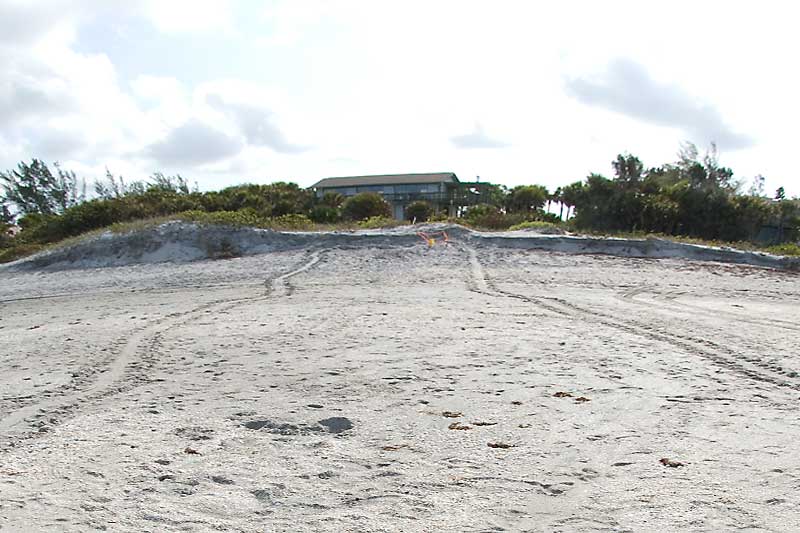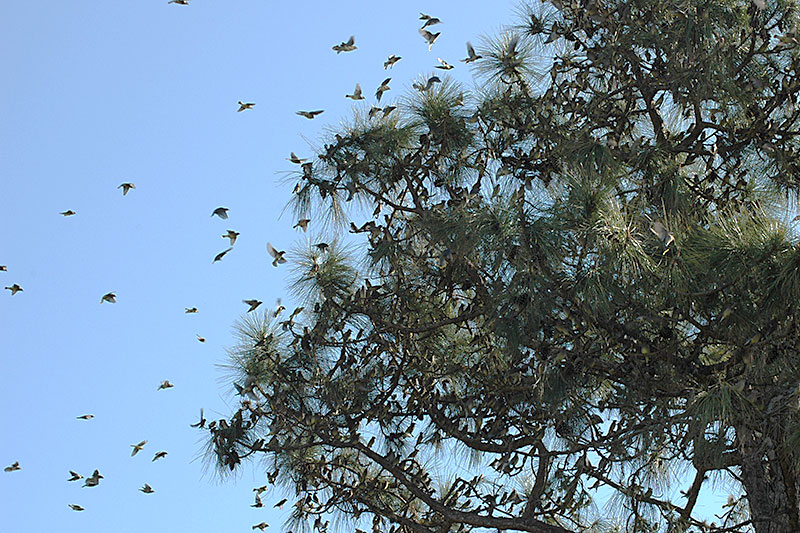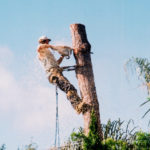Each year, various species of sea turtles crawl out of the Gulf of Mexico, dig a nest in the sand and lay their eggs.The photo above shows the tracks made by a turtle crawling up the beach to make a nest.
Nesting season starts in May and most of the baby turtles hatch by the end of October. Sea turtles are listed as threatened or endangered by the US government. It is illegal, not to mention just down right mean, to disturb the nests of any sea turtle.
Sea turtles usually emerge from the water to make nests at night. A single female turtle can lay up to 100 eggs. The sad fact is that the survival rate of the hatchlings is very small. There are a host of predators that face the turtles. Raccoons and foxes will dig up and eat the eggs, as well as go after the hatchlings as they emerge from the nests. Sea gulls and other predator birds will eat the young turtles as they make their way back into the water. In the sea, there are more hungry creatures waiting to grab a young turtle for a meal. This may not be a pleasant thought but the fact is, all creatures need to eat and only the strongest survive. I have read that only one hatchling out of a hundred eggs makes it to adulthood. The hatchlings need all the help they can get.
There is a group of dedicated people who do their best to help increase the survival rate of the turtles. In many areas they are known as “The Turtle Patrol”. 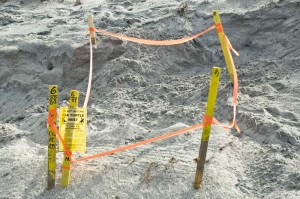 Every morning during nesting season, the Turtle Patrol folks are out on the beaches at the crack of dawn to look for any new nests. Often, a turtle will come out of the water and return without actually laying any eggs; this is known as a false crawl and is marked by the patrol folks with an X in the sand. If a crawl results in a nest that is determined to have eggs, the volunteer places a protective cage over it to keep out predators. A sign is placed nearby to record the date when the nest was made.
Every morning during nesting season, the Turtle Patrol folks are out on the beaches at the crack of dawn to look for any new nests. Often, a turtle will come out of the water and return without actually laying any eggs; this is known as a false crawl and is marked by the patrol folks with an X in the sand. If a crawl results in a nest that is determined to have eggs, the volunteer places a protective cage over it to keep out predators. A sign is placed nearby to record the date when the nest was made.
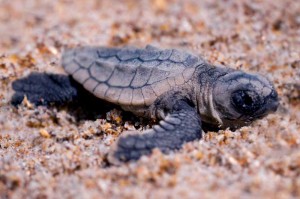 The eggs usually hatch at night; the babies use the moonlight on the water to guide them home. Most coastal counties in Florida have laws in place restricting artificial light close to the shore during nesting season.
The eggs usually hatch at night; the babies use the moonlight on the water to guide them home. Most coastal counties in Florida have laws in place restricting artificial light close to the shore during nesting season.
Female turtles will not come ashore if there is too much light, they prefer dark beaches. Hatchlings can get confused if they see lights on shore and will crawl toward the lights instead of the water; a fatal decision.
Years ago, while vacationing here in Florida, we decided to take a moonlight walk on the beach. As we walked about a fifty yards from the condo where we were staying, we came upon a turtle digging a nest. She was as big around as a car tire. We watched her labor work for several minutes before continuing on our stroll. The next morning we saw the Patrol volunteer at the nest site. We commented to her that we saw the turtle depositing the eggs on our walk. The volunteer told us how fortunate we were; she had been walking the beach for years and had never witnessed a turtle laying eggs.
A few things to keep in mind if you see any turtle activity on the beach:
- It is illegal to touch, handle or disturb any sea turtle.
- If you observe an adult or hatchling at night, DO NOT take any flash photos, even with a cell phone.
- Do not leave beach chairs or toys on the beach overnight; turtles can get tangled in them.
- If you make a sand castle or dig a hole in the sand, smooth out the sand and fill in any holes before you leave; a turtle can fall in a hole and die.
If you see a turtle in distress, do not try to help, call the local Turtle Patrol or the Florida Fish and Wildlife Commission’s 24 hour wildlife hotline at: 888-404-3922.
For more information about laws, rules and regulations concerning sea turtles visit the Florida Fish and Wildlife Commission site.
The sea turtles and I have one thing in common: I’m an old photographer; I’ve done some of my best work in the dark.

